FDA Compliance Policy Guide Sec. 555.400 Aflatoxins in Human Food
标准简介
Compliance Policy Guide Sec. 555.400 Aflatoxins in Human Food[附网盘链接]是Food And Drug Administration发布的FDA标准,适用于US。标准截图
![Compliance Policy Guide Sec. 555.400 Aflatoxins in Human Food[附网盘链接]](/img/20210914103625r91ju.jpg)
标准文档说明
标准文档类型为Compliance Policy Guide Sec. 555.400 Aflatoxins in Human Food[附网盘链接]高清PDF版本(文字版),标准文档内可进行搜索,可以复制原文,可粘贴。标准部分原文
Compliance Policy Guide Sec. 555.400 Aflatoxins in Human Food: Guidance for FDA Staff This guidance represents the current thinking of the Food and Drug Administration (FDA or we) on this topic. It does not establish any rights for any person and is not binding on FDA or the public. You can use an alternative approach if it satisfies the requirements of the applicable statutes and regulations. To discuss an alternative approach, contact the FDA staff responsible for this guidance at the phone number listed on the title page. *I. Introduction
The purpose of this document is to provide guidance for FDA staff on aflatoxins in human food. We revised this document to update the format and to include revisions for clarity, references to other aflatoxin Compliance Policy Guides (CPGs), and a reference to the Memorandum of Understanding between the Agricultural Marketing Service (AMS) of the United States Department of Agriculture (USDA) and FDA. The contents of this document do not have the force and effect of law and are not meant to bind the public in any way, unless specifically incorporated into a contract. This document is intended only to provide clarity to the public regarding existing requirements under the law. FDA guidance documents, including this guidance, should be viewed only as recommendations, unless specific regulatory or statutory requirements are cited. The use of the word should in FDA guidance means that something is suggested or recommended, but not required. II. Background
Aflatoxins (B1, B2, G1, and G2) are toxic metabolites produced by the molds Aspergillus flavus, Aspergillus nomius, and Aspergillus parasiticus. Toxicological manifestations of aflatoxins include teratogenicity, mutagenicity, and carcinogenicity in susceptible animal species. Consumption of food with high levels of aflatoxins is associated with liver cancer in humans. Aflatoxins may occur in food as a result of mold growth in susceptible raw agricultural commodities. The growth of molds that produce aflatoxins is influenced by environmental factors such as temperature, humidity, and extent of rainfall during the pre-harvesting, harvesting, or post-harvesting periods. Foods most susceptible to molds that produce aflatoxins include: peanuts, corn, some tree nuts including Brazil nuts and pistachios, and some small
网盘链接
百度网盘:https://pan.baidu.com/s/1Rvob4fL4BuVjajGy7KI_cw
提取码:i1pj
【温馨提示】大资料ISO是提供信息发布的专业信息类网站,所有内容均由用户发布,不代表本站观点,本站亦不存储所涉及的文件及资料。如有【免费资料】以及【付费资料】,请用户根据自己的需求,自行判断是否需要获取。如有交易诈骗、内容侵权可发送邮件至kf@dzl100.com,我们审查后若发现情况属实,会立即对相关内容进行删除处理。
加载用时:25.1488 毫秒
相关评论
相关文章
-
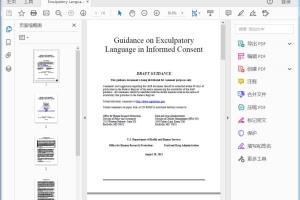
FDA Exculpatory Language in Informed Consent
Exculpatory Language in Informed Consent[附网盘链接]是FDA于不久前发布的FDA标准,适用于美国。本次分享的标准文档为高清PDF(文字版),标准文档内可搜索,可复制,可粘贴。本文结尾附网盘链接。
-

FDA Allowable Excess Volume and Labeled Vial Fill Size in Injectable Drug and Biological Products
Allowable Excess Volume and Labeled Vial Fill Size in Injectable Drug and Biological Products[附网盘链接]是Food And Drug Administration于不久之前发布的FDA标准,适用于US。本次分享的标准文档为高清PDF(文字版),标准文档内可搜索,可复制,可粘贴。本文结尾附网盘链接。
-
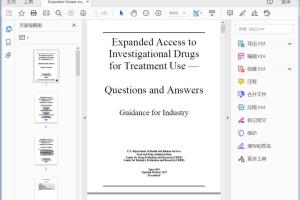
FDA Expanded Access to Investigational Drugs for Treatment Use - Questions and Answers
Expanded Access to Investigational Drugs for Treatment Use - Questions and Answers[附网盘链接]是Food&Drug Administration于不久前发布的FDA标准,适用于U.S。本次分享的标准文档为高清PDF(文字版),标准文档内可搜索,可复制,可粘贴。本文结尾附网盘链接。
-
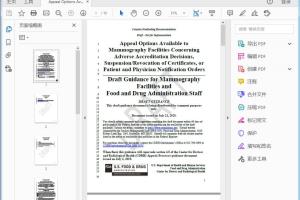
FDA Adverse Accreditation Decisions, SuspensionRevocation of Certificates, or Patient and Physician Notification Orders Draft
Adverse Accreditation Decisions, SuspensionRevocation of Certificates, or Patient and Physician Notification Orders Draft[附网盘链接]是Food And Drug Administration于不久之前发布的FDA标准,适用于United States。本次分享的标准文档为高清PDF(文字版),标准文档内可搜索,可复制,可粘贴。本文结尾附网盘链接。
-
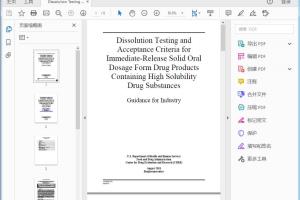
FDA Dissolution Testing and Acceptance Criteria for Immediate-Release Solid Oral Dosage Form Drug Products Containing High Solubility Drug Substances
Dissolution Testing and Acceptance Criteria for Immediate-Release Solid Oral Dosage Form Drug Products Containing High Solubility Drug Substances[附网盘链接]是FDA于过去发布的FDA标准,适用于美国。本次分享的标准文档为高清PDF(文字版),标准文档内可搜索,可复制,可粘贴。本文结尾附网盘链接。
-

FDA Exculpatory Language in Informed Consent
Exculpatory Language in Informed Consent[附网盘链接]是FDA于不久前发布的FDA标准,适用于美国。本次分享的标准文档为高清PDF(文字版),标准文档内可搜索,可复制,可粘贴。本文结尾附网盘链接。
-
![CVM GFI #185 (VICH GL43) Target Animal Safety for Veterinary Pharmaceutical Products.pdf[网盘链接]](/img/small/20210914103659dm8zg.jpg)
CVM GFI #185 (VICH GL43) Target Animal Safety for Veterinary Pharmaceutical Products.pdf[网盘链接]
GFI #185 (VICH GL43) Target Animal Safety for Veterinary Pharmaceutical Products.pdf是于发布的标准,适用于。本次分享的标准文档为高清PDF(文字版),标准文档内可搜索,可复制,可粘贴。本文结尾附网盘链接。
-

FDA Allowable Excess Volume and Labeled Vial Fill Size in Injectable Drug and Biological Products
Allowable Excess Volume and Labeled Vial Fill Size in Injectable Drug and Biological Products[附网盘链接]是Food And Drug Administration于不久之前发布的FDA标准,适用于US。本次分享的标准文档为高清PDF(文字版),标准文档内可搜索,可复制,可粘贴。本文结尾附网盘链接。
-

FDA Expanded Access to Investigational Drugs for Treatment Use - Questions and Answers
Expanded Access to Investigational Drugs for Treatment Use - Questions and Answers[附网盘链接]是Food&Drug Administration于不久前发布的FDA标准,适用于U.S。本次分享的标准文档为高清PDF(文字版),标准文档内可搜索,可复制,可粘贴。本文结尾附网盘链接。
-

FDA Adverse Accreditation Decisions, SuspensionRevocation of Certificates, or Patient and Physician Notification Orders Draft
Adverse Accreditation Decisions, SuspensionRevocation of Certificates, or Patient and Physician Notification Orders Draft[附网盘链接]是Food And Drug Administration于不久之前发布的FDA标准,适用于United States。本次分享的标准文档为高清PDF(文字版),标准文档内可搜索,可复制,可粘贴。本文结尾附网盘链接。
-

FDA Dissolution Testing and Acceptance Criteria for Immediate-Release Solid Oral Dosage Form Drug Products Containing High Solubility Drug Substances
Dissolution Testing and Acceptance Criteria for Immediate-Release Solid Oral Dosage Form Drug Products Containing High Solubility Drug Substances[附网盘链接]是FDA于过去发布的FDA标准,适用于美国。本次分享的标准文档为高清PDF(文字版),标准文档内可搜索,可复制,可粘贴。本文结尾附网盘链接。
-

FDA Clinical Pharmacology Labeling for Human Prescription Drug and Biological Products — Content and Format
Clinical Pharmacology Labeling for Human Prescription Drug and Biological Products — Content and Format[附网盘链接]是Food And Drug Administration于当前发布的FDA标准,适用于United States。本次分享的标准文档为高清PDF(文字版),标准文档内可搜索,可复制,可粘贴。本文结尾附网盘链接。
-
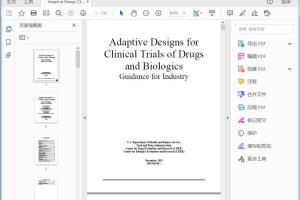
FDA Adaptive Design Clinical Trials for Drugs and Biologics Guidance for Industry
Adaptive Design Clinical Trials for Drugs and Biologics Guidance for Industry[附网盘链接]是FDA于过去发布的FDA标准,适用于美国。本次分享的标准文档为高清PDF(文字版),标准文档内可搜索,可复制,可粘贴。本文结尾附网盘链接。
-

FDA Compliance Policy for the Quantity of Bioavailability and Bioequivalence Samples Retained Under 21 CFR 320.38(c)
Compliance Policy for the Quantity of Bioavailability and Bioequivalence Samples Retained Under 21 CFR 320.38(c)[附网盘链接]是FDA于不久前发布的FDA标准,适用于U.S。本次分享的标准文档为高清PDF(文字版),标准文档内可搜索,可复制,可粘贴。本文结尾附网盘链接。
-

FDA Coronary Drug-Eluting Stents — Nonclinical and Clinical Studies -Companion Document
Coronary Drug-Eluting Stents — Nonclinical and Clinical Studies -Companion Document[附网盘链接]是FDA于当前发布的FDA标准,适用于美国。本次分享的标准文档为高清PDF(文字版),标准文档内可搜索,可复制,可粘贴。本文结尾附网盘链接。